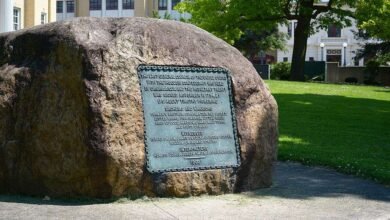The Adirondack Council at 50


 In January, 1975, a score of men, Ivy League graduates, accomplished, most of them wealthy, assembled in a conference room at the Rockefeller family offices in New York City to discuss the possibility of creating “a mechanism” to monitor the newly-established Adirondack Park Agency, to intervene in its proceedings when necessary, that is to say, when the future of the Adirondack Park was at stake, and to raise funds to finance its work.
In January, 1975, a score of men, Ivy League graduates, accomplished, most of them wealthy, assembled in a conference room at the Rockefeller family offices in New York City to discuss the possibility of creating “a mechanism” to monitor the newly-established Adirondack Park Agency, to intervene in its proceedings when necessary, that is to say, when the future of the Adirondack Park was at stake, and to raise funds to finance its work.
Many of those present were leaders and founders of other conservation organizations and agencies in the Adirondacks, including the Adirondack Park Agency itself. To the radicalized opposition to the APA, this was evidence – if evidence were needed – of the existence of a vast conspiracy of elites to deprive the residents of the Adirondacks of their rights. That “mechanism” or new organization was to be called the Adirondack Council.
According to environmental attorney and Bolton Landing resident Bob Kafin, who was at that meeting, the engine driving the creation of the Adirondack Council was a series of proposals to create large-scale subdivisions within the Blue Line. Had they materialized, the natural resources of the Park and the towns’ small year-round populations and aging infrastructure would have been overwhelmed.
“Whenever one of these developments came along, a defense was patched together, usually by those who would have been its neighbors. We decided that what was needed was something institutional, rather than temporary coalitions,” said Kafin, who would go on to serve as a chairman of the Adirondack Council’s Board of Directors.
According to Kafin, it was also the view that the Adirondack Park Agency needed an ally, even if it was from the left, to hold it accountable for the protection of the park – even as state legislators in both houses were working to undermine the agency, to, in fact, abolish it.
The Adirondack Council Today
While threats to the Adirondack Park from over-development for the most part have been successfully managed if not eradicated, threats emanating from beyond the Blue Line add new urgency to the Adirondack Council’s mandate to preserve the park’s unique character, says its current executive director, Rocci Aguirre.
As one the largest intact temperate forest ecosystems still left, the Adirondack Forest Preserve’s influence extends beyond the park, sequestering carbon and reducing such climate change impacts as air pollution, water stress and flooding throughout the Hudson River watersheds.
The Adirondack Park is also a living, natural laboratory – “a canary in the coal mine,” as Aguirre puts it, a 6-million-acre island that can act as a proxy for the rest of the world as it wrestles with the fallout from climate change.
Advocating for programs and policies that “address climate chaos,” is necessarily a part of the Adirondack Council’s mission, said Aguirre.
“The fight to protect the Adirondacks’ lakes from acid rain, taking that fight to Washington DC, educating elected officials about the impacts that distant power plants were having on the Adirondacks, put the Adirondack Council on the national map,” he said. “Today, fighting climate change is redefining the role played by the Adirondack Council at both the state and national levels.”
That doesn’t mean, however, that the mission of the Adirondack Council has changed, said Aguirre. “We’ll evolve as an organization, but we’ll continue to be the advocate for the Park, as a facilitator for and an agent of change, always finding new ways to engage with others in this space,” said Aguirre.
And rather than an adversary of local governments, as it was portrayed by some people fifty years ago, the Adirondack Council is now among their most eloquent and influential advocates.
Adirondack legislators who opposed the creation of the APA and its land use plans in the early 70s and who purported to represent aggrieved landowners, frustrated developers and speculative entrepreneurs have been replaced by those with no experience of the 1970s, and who even contributed salutations on the occasion of the Adirondack Council’s 50th anniversary.
“Congratulations on 50 years of working to protect the Adirondacks and its world-class trout and salmon fisheries from acid rain and road salt,” said NYS Sen. Dan Stec. “Protecting sporting opportunities helps the local economy and improves the quality of life for Adirondackers.”
“Happy 50th anniversary to the Adirondack Council, which helped to pass a Constitutional Amendment that created a local land bank to help communities cope with the restrictions of living adjacent to state- protected wilderness areas,” said Assemblymember Matthew Simpson. “Protecting wild places while working to develop the local economy is a tough task, but it is a task worth doing.”
“Politics in Albany have shifted. They are not as adversarial as they once were,” Aguirre acknowledged in a 2024 interview with the Lake George Mirror about the Adirondack Council’s history.
“I think the Adirondack Council has also matured over time,” he continued. “How we engage with communities is as important to us as the way we engage with public lands. The issues affecting the Adirondacks affect us directly. We live here. We want to be an authentic advocate for these communities.”
But, he added, “That doesn’t mean we agree with state legislators on every issue, much as I respect the role they play. I can point to any number of issues where we’ve had differences of opinion, and we don’t shy away from taking stands on controversial issues, especially if our positions will align with the historical mission of the Adirondack Council and with a direction we see for the organization.”
However much circumstances may have changed, the mission and direction of the Adirondack Council haven’t: “to advocate for the Park, to speak for the Adirondacks in Albany, to bring funding back to the Park, to keep its priorities front and center,” said Aguirre.
“We are one of the few groups with the political influence to keep stakeholders and decision makers accountable,” he said.
A version of this article first appeared on the Lake George Mirror, America’s oldest resort paper, covering Lake George and its surrounding environs. You can subscribe to the Mirror HERE.
Source link




